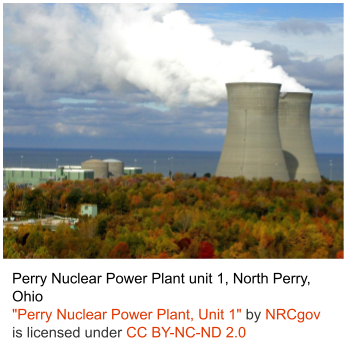Is It Time To Go Nuclear?
The planet is warming. Backed by decades of science and countless studies climate change is the biggest threat to humankind in the near future. The primary cause? The emission of more greenhouse gasses, primarily CO2, into the atmosphere than our ecosystems can absorb. Climate change poses a risk to not just humankind but nearly all species on earth. Many species are heading toward extinction in the near future if nothing is done.
Among the effects of the warming planet are rising sea levels. As temperatures increase globally, seawater undergoes thermal expansion. This expansion combined with water added by melting glaciers, and ice caps results in rising sea levels. If action is not taken to prevent climate change these rising sea levels will gradually consume currently inhabited land. Pennridge High
inhabited land. Pennridge High
School Ap Environmental Science teacher Sabrina Bates stated in an interview, ”Over 170 communities on the gulf coast and eastern shore will experience chronic inundation by 2035.” Chronic inundation is defined as the flooding of 10 percent of usable land at least 26 times per year. This loss of land has its own host of side effects. As everyone knows sea water is salty. After coastal flood water recedes it leaves behind some of its salt content which can have adverse effects on local inland ecosystems. Bates in the same interview elaborated, “What happens is the water becomes more brackish and saltier, and that affects the ecology because you get dead zones where the trees can’t adapt to the change in salinity.”
What is the solution? At the core of most solutions is the transformation of power sources globally. For over a century, countries like the United States have produced most of their power by means of fossil fuels, namely coal, and natural gas. Fossil fuels are cheap, simple, and effective, but they have one huge downfall: carbon emissions. In order to greatly reduce these emissions, the plan is to go renewable. Solar and wind farms not only provide clean energy but also nearly infinite energy. So long as the sun, and wind still exist these solutions will produce power. The problem with these sources is reliability. After all, not every day is sunny, or windy. For this reason, renewable energy sources require massive battery banks capable of supplying power to the grid when farms are the least productive. Is current battery technology sufficient for the job? An MIT research lab run by Jessika Trancik sought to answer this question. They found that in order for a 100 percent renewable grid to be feasible, commercial power storage would have to drop to just $20 per kilowatt-hour of capacity. This is a nearly 90 percent drop from current rates which isn’t expected by most to occur before 2030.
Recently, a Different solution has arisen though. Nuclear power is an extremely clean method of energy production. Although nuclear fission produces no carbon emissions, the mining of nuclear fuel and construction of power plants does. Despite this, the National Renewable Energy Laboratory (NERL) showed that nuclear power produces fewer carbon emissions than all solar solutions per kilowatt-hour of energy produced over their lifespans. This calculation accounted for the carbon emissions produced from all stages of both energy options. The idea with nuclear is to reverse current trends in the decommissioning of nuclear power plants and utilize nuclear power as a supplement to solar and wind. This idea bases its stance on the high reliability of nuclear power. It can operate at maximum efficiency 92.5 percent of the time. This makes it the most reliable power solution available in the world. It also means that one nuclear power plant can supply the same daily output as 3.5 equally rated solar farms or 2.5 wind farms. Nuclear power has drawbacks of its own though. Primarily the nuclear wastes it produces. The United States has failed to establish a permanent solution for the storage and management of nuclear wastes. Currently, the wastes of most power plants are stored onsite, either underground, or underwater. With no permanent solutions in place, new infrastructure and protocol would need to be established before nuclear power could be revived.
Justin Tuttle is currently a senior at PHS. His interests and hobbies include surf fishing, camping, traveling, learning and playing music, and trying...




